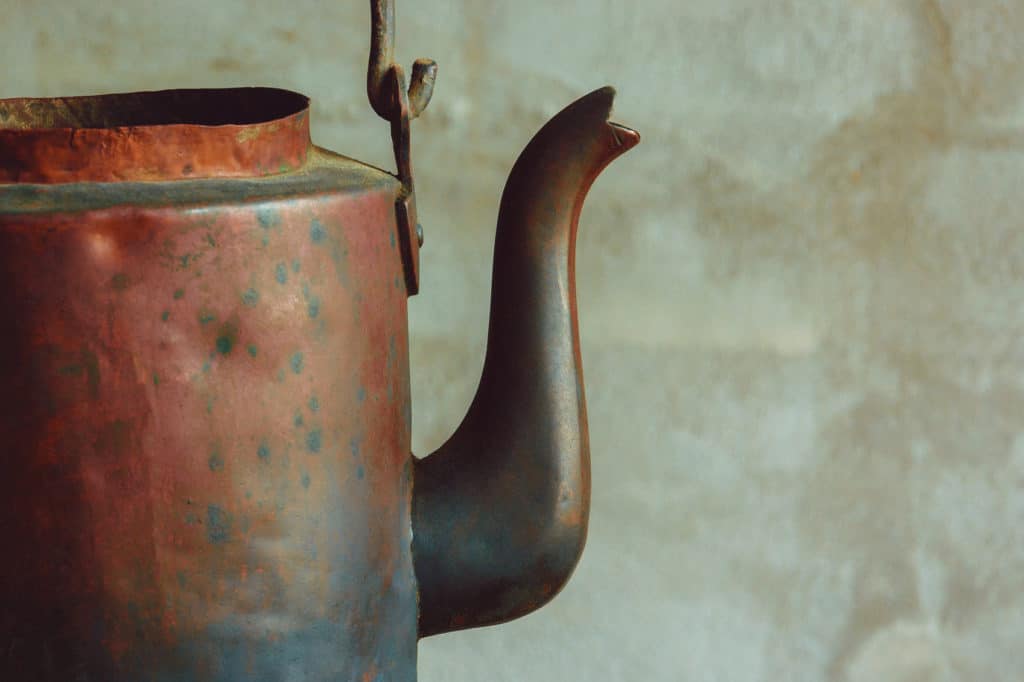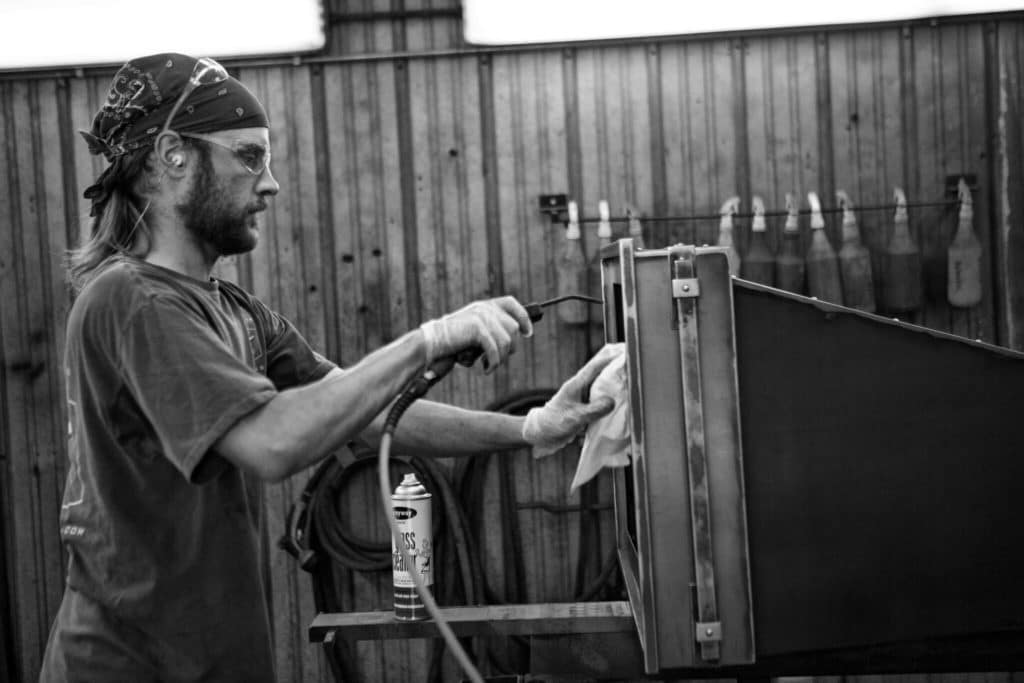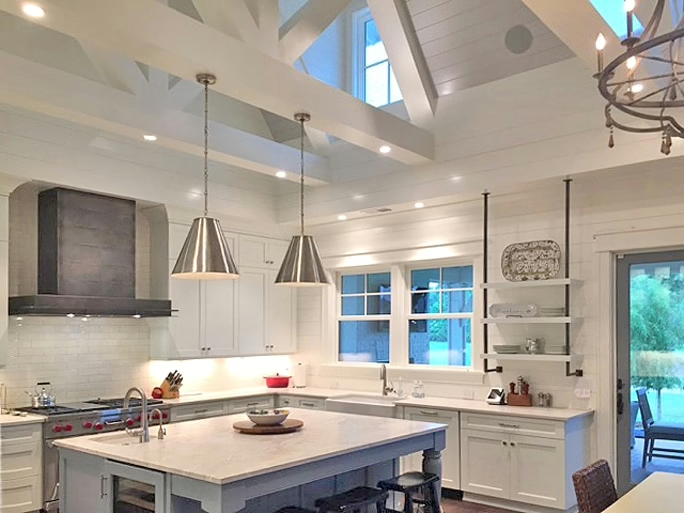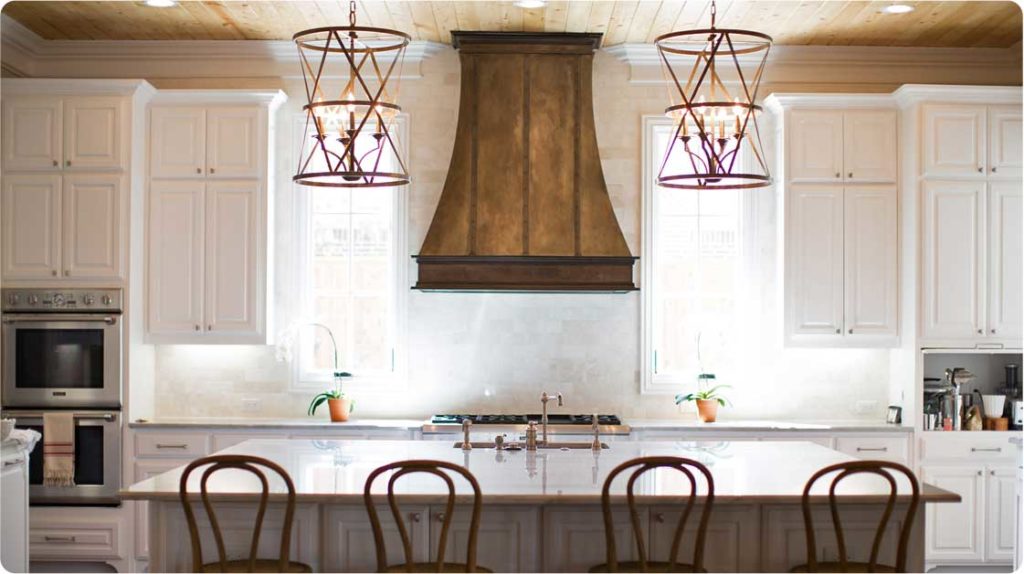What is Patina?
I get asked almost daily to define patina or describe what patinas are. The word has become such a catch word in the industry. We see all sorts of products being sold with “patina” finishes. So, I thought I should give you a little Patina 101 to get this blog rolling!
Patina is a chemical process that happens naturally when metal is left to the elements. The metal oxidizes when exposed to air, much like an avocado (or any fresh surface for that matter) begins to turn brown after being cut. It is a chemical process. Patina is what makes an antique copper pot spot and richen in color. It also rusts a tractor in the field. Simply said, patina is what metal does when it is completely left alone. Over time, the metal shows age, time and use.

Patinas in Design
When we talk about patinas in the world of design, we are usually talking about a little help from human hands to hurry that process along. It is possible to add acidity and alkalinity to the surface of a metal to create reactions. Each metal reacts in it’s own way to the different chemicals it comes in contact with. Like our chemistry class in high school, some of the outcomes are expected and others, not so much. When forcing a chemical process, it is equally important to then stop the process. If the reaction is not reversed, it will continue at a much more rapid rate than nature would allow. This can cause quite a few problems and loss of a beautiful finish.
In addition to any chemicals used to force a patina, the environment also plays a part. The humidity in the air, temperature of the space and other chemicals already in the area affect the reactions. We have often said that our patinas are beautiful because of the mountain air and low humidity we enjoy here in Colorado. Who knows, maybe they would be even better if we were on the beach in Florida. Ultimately, the combination of all outside influences change the patinas as they are developed.

Creating patinas outside of the natural world is an art form. The people that can do it well have a gift that is not easily replicated. We have found that each artist has a very specific style that is recognizable and individual. For us here at Raw Urth, we are lucky to have two such talented artists. We also have one up and coming! We are excited to see what she will bring to the table and what new finishes she will create!
How is Patina on Metal Different from Painted Metal?
Although there are some fantastic faux painters out there, paint will never have the feel of a patina. That is because it sits on the surface and is a solid color. A patina on the other hand, becomes part of the metal itself. Because of this, the metal is allowed to shine through. Each metal has it’s own reflective quality and beauty that glows from within. When walking around a patina’d metal surface, the reflection and color changes as you move. It bounces the light and reflects the color differently on different planes. When covered in paint, this glow is removed from the equation and the color falls flat. No matter how you look at it, it is always the same color. Even the best painters out there will never be able to recreate the natural reflection of the base metal with paints.
Unlike paint, patinas can not be strictly controlled. Most of us in the business that work with patinas realize that the best we can push for is a basic tonal quality. Colors will range in tone no matter the process. It is not easy to control. Paint on the other hand, will be the color chosen every time regardless of the the metal underneath.
Which Metals Can Be Patina’d?
We can patina all the specialty metals that we work with. Even Stainless Steel can get a little color! (It is called stain-less, not stain-never 🙂 Brass, Bronze, Zinc, Pewter and Copper can all benefit from a touch of patina too. Mild Steel however, is the most exciting metal to patina. Because of all the imperfection in Steel, we get great coloring with the chemical reactions. Steel naturally patinas red. We call it rust. Because of that undertone of red on a normally black/gray surface, steel can generate so many great color combinations. If you look through our patina finishes page, you will notice that the largest range in color comes from the Steel finishes. It is the most imperfect metal making it the most perfectly unrefined.
Stay posted to our blog as we talk through patina and each of the metals one by one. Every metal is made up of different alloys and therefore is a puzzle unto itself when we start trying to patina them!

